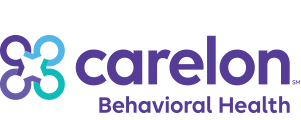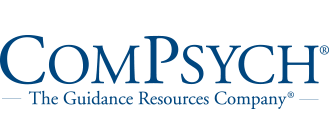Bayside Marin is a premier rehabilitation center dedicated to the treatment of codeine addiction in California. Bayside Marin blends evidence-based treatments with alternative, holistic modalities to comprehensively treat all aspects of our client’s life.
Understanding Codeine
Learn about codeine and substance abuse
Codeine is a Schedule II controlled substance that has a high potential for both abuse and severe dependence. An opiate that can either be directly derived from the poppy plant or semi-synthetically synthesized, codeine is most commonly prescribed to relieve symptoms such as coughing, pain, and diarrhea. When used for appropriate medical purposes, codeine is such a valuable substance that the World Health Organization (WHO) has included it on its Model List of Essential Medicines.
In the United States, the drug is usually sold as codeine sulfate or codeine phosphate. Though in some other countries, codeine hydrochloride is the most common form. Depending upon the amount of codeine in a medication, the effects may last from 6 to 24 hours. Medications that contain codeine include Phenflu CD, Tylenol with Codeine #3, Contabflu, and Poly-Tussin.
Codeine abuse is not uncommon, as medications that contain this drug are plentiful and are often stolen, misdirected, or otherwise illicitly acquired. Going “doctor shopping” (visiting multiple doctors in order to find a physician who will prescribe the desired medication), faking pain, forging prescriptions, stealing the medication from pharmacies or homes, or purchasing the drug from illicit online pharmacies are among the many ways that codeine is acquired by those who intend to use it for recreational or other unapproved purposes. Once individuals have begun abusing codeine, it can be exceedingly hard to put an end to that destructive behavior without professional help. Fortunately, there are treatment options for codeine abuse available that can help these individuals overcome their desire and compulsion to use and rediscover a happy, healthy, and sober life.
Statistics
Codeine addiction statistics
WHO reports that codeine is the most commonly used opiate in the world. It is also one of the world’s most over-prescribed medications. More than 30 million Americans use codeine for unapproved, recreational, or other illicit purposes every year. According to the U.S. Centers for Disease Control and Prevention (CDC), opioid abuse was involved in more than 16,000 deaths in 2013. CDC research also indicates that opioid abuse inflicts more than $55 billion in damage on the U.S. economy each year due to lost productivity, healthcare costs, and criminal justice expenses.
Causes and Risk Factors
Causes and risk factors for codeine addiction
Developing an addiction to codeine or any other drug is believed to be related to both internal (genetic) and external (environmental) factors. The following are among the influences that may contribute to the development of codeine dependency or addiction:
Genetic: Family history can play a role in the development of a substance use disorder or addiction. Having a close relative (especially a first-degree relative, such as a parent or sibling) who has a chemical dependency disorder will increase a person’s odds of having a similar problem. Family history of mental illness has also been associated with an increased likelihood of substance abuse and addiction.
Environmental: Drug abuse and addiction within one’s family can also be an environmental influence, as children who grow up in houses where drug use is common may be more prone to engage in similar behaviors. Other environmental influences on the development of addiction include poverty, trauma, stress, and having friends who engage in substance abuse.
Risk Factors:
- Addiction within the family
- Mental illness within the family
- Personal experience with prior substance abuse
- Personal history of mental illness
- Being male
- Being poor
- Being young
Signs and Symptoms
Signs and symptoms of codeine addiction
Individuals who exhibit several of the following signs may be engaging in the abuse of codeine:
Behavioral symptoms:
- Withdrawing from family and friends
- Becoming secretive regarding one’s activities and associates
- Experiencing a dramatic unexplainable decrease in performance at work
- Using prescription medications without a prescription
- Using prescription medications beyond the time period for which they were prescribed
- Using prescription medications for purposes other than for which they were prescribed
Physical symptoms:
- Lethargy
- Appearing dazed, confused, or otherwise “out of it”
- Dizziness or disorientation
- Slurring speech
- Coordination problems
- Difficulties with motor skills
- Glassy or watery eyes
Cognitive symptoms:
- Euphoria
- Problems focusing on conversations
- Having trouble thinking clearly and/or expressing oneself
- Being confused
- Becoming deluded
- Experiencing paranoia
Psychosocial symptoms:
- Being unexplainably agitated or irritable
- Undergoing dramatic mood swings
- Complaining of stomachaches, headaches, and other undefined pain
Effects
Effects of codeine addiction
The following are among the many short- and long-term health effects that can result from codeine abuse:
- Nausea and constipation
- Dizziness and lightheadedness
- Slow heart rate
- Weakened pulse
- Itchy skin
- Seizures
- Hallucinations
- Excessive sweatiness
Co-Occurring Disorders
Codeine addiction and co-occurring disorders
The following disorders are common among people who abuse codeine:
- Attention-deficit/hyperactivity disorder (ADHD)
- Bipolar disorder
- Depression (including major depressive disorder and persistent depressive disorder)
- Anxiety disorders
- Oppositional defiant disorder (ODD)
- Other forms of substance abuse/addiction
Withdrawal & Overdose
Effects of codeine withdrawal and overdose
Effects of codeine withdrawal: The following are among the more common withdrawal symptoms associated with the sudden cessation of codeine use:
- Powerful drug cravings
- Muscle cramps
- Stomach pain
- Nausea
- Vomiting and diarrhea
- Excessive perspiration
- Tremors
- Insomnia
- Loss of appetite
- Depression
- Agitation
Effects of codeine overdose: Codeine overdose can result in significant damage, including death. The following signs of overdose require immediate medical attention:
- Anaphylaxis
- Heart failure
- Breathing problems
- Convulsions
- Seizures
- Loss of consciousness










